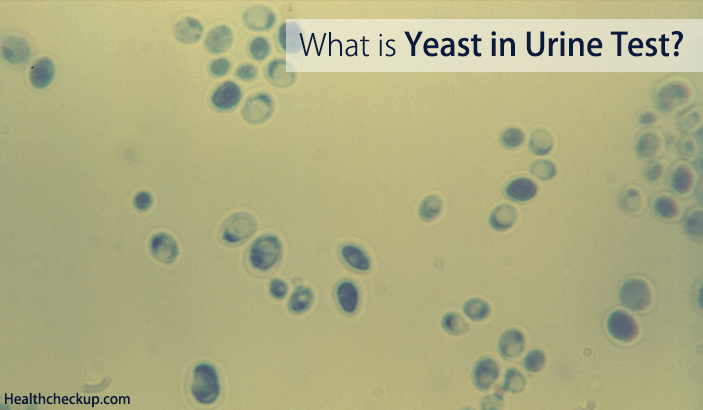To help determine the cause of vaginal infection or irritation, the doctor does a urinalysis to check if there is yeast in urine and asks the woman about her symptoms and performs a physical, pelvic examination. The doctor usually also tests the woman’s urine and samples of vaginal discharge. Before the exam, sexual intercourse and douching should be avoided for one to two days if possible to avoid complicating the diagnosis.
During the pelvic examination, the doctor inspects the woman’s vaginal canal and cervix for discharge, sores, and any local pain or tenderness. The doctor may insert a speculum into the vagina to examine the cervix. This may be uncomfortable because of pressure on the vaginal tissues.
Yeast in Urine – Tests the Doctor May Perform
Most Candidal infections can be diagnosed without laboratory tests. The doctor may administer the following diagnostic tests at the time of examination.
The doctor may take culture swabs of any vaginal discharge to determine if the infection is fungal (yeast), protozoan (trichomoniasis), or bacterial (bacterial vaginosis). The doctor may also view a discharge sample under a microscope to look for organisms that cause vaginal yeast infections. Examination of the discharge under a microscope is the simplest and least costly method used for diagnosis of yeast infection, but this test may be negative in up to 50% of women who have a yeast infection.
In some cases, the doctor may administer a Pap test to rule out the possibility of cervical dysplasia or cancer. The test is then sent to a laboratory and results typically take one week.
The doctor may recommend a colposcopy or biopsy if the woman’s cervix appears abnormal. Colposcopy involves a lighted microscope to examine the surface of the cervix. A biopsy involves taking a tissue sample for testing.
The doctor may use special DNA tests to detect yeast or other organisms in the discharge.
Urine Test Facts:
A urine test checks different components of urine, a waste product made by the kidneys. A regular urine test may be done to help find the cause of symptoms. The test can give information about your health and problems you may have.
The kidneys take out waste material, minerals, fluids, and other substances from the blood to be passed in the urine. Urine has hundreds of different body wastes. What you eat and drink, how much you exercise, and how well your kidneys work can affect what is in your urine.
More than 100 different tests can be done on urine. A regular urinalysis often includes the following tests:
Colour: Many things affect urine colour, including fluid balance, diet, medicines, and diseases. How dark or light the colour is tells you how much water is in it. Vitamin B supplements can turn urine bright yellow. Some medicines, blackberries, beets, rhubarb, or blood in the urine can turn urine red-brown.
Clarity: Urine is normally clear. Bacteria, blood, sperm, crystals, or mucus can make urine look cloudy.
Odour: Urine does not smell very strong, but it has a slightly “nutty” odour. Some diseases cause a change in the odour of urine. For example, an infection with E. coli bacteria can cause a bad odour, while diabetes or starvation can cause a sweet, fruity odour.
Specific Gravity: This checks the number of substances in the urine. It also shows how well the kidneys balance the amount of water in urine. The higher the specific gravity, the more solid material is in the urine. When you drink a lot of fluid, your kidneys make urine with a high amount of water in it, which has a low specific gravity. When you do not drink fluids, your kidneys make urine with a small amount of water in it, which has a high specific gravity.
Microscopic Analysis: In this test, urine is spun in a special machine (centrifuge). So the solid materials (sediment) settle at the bottom. The sediment is spread on a slide and looked at under a microscope. Things that may be seen on the slide include:
Red or White Blood Cells: Blood cells aren’t found in urine normally. Inflammation, disease, or injury to the kidneys, ureters, bladder, or urethra can cause blood in urine. Strenuous exercise, such as running a marathon, can also cause blood in the urine. White blood cells may be a sign of infection or kidney disease.
Casts: Some types of kidney disease can cause plugs of material (called casts) to form in tiny tubes in the kidneys. The casts then get flushed out in the urine. Casts can be made of red or white blood cells, waxy or fatty substances, or protein. The type of cast in the urine can help show what type of kidney disease may be present.
Crystals: Healthy people often have only a few crystals in their urine. A large number of crystals, or certain types of crystals, may mean kidney stones are present or there is a problem with how the body is using food (metabolism).
Bacteria, Fungi, Candida, Yeast cells, or Parasites: There are no bacteria, parasites or yeast cells in urine normally. If these are present, it can mean you have an infection. Presence of yeast in urine to be checked.
Squamous Cells: The presence of squamous cells may mean that the sample is not as pure as it needs to be. These cells do not mean there is a medical problem, but your doctor may ask that you give another urine sample.
Can a Yeast Infection Cause a UTI?
Urinary tract infections and yeast infections are common in women and may often occur together. Sometimes, antibiotics can cause healthy bacteria to die which results in the weakening of your defenses thus resulting in an yeast infection. In fact, almost every woman will experience one or both at least once in her lifetime. While some symptoms may be similar, one can be far more serious than the other.
Can a Yeast Infection be Detected in a Urine Sample?
Yes, a urine test will determine yeast in urine if present.
Here’s what you need to know about the similarities and differences between urinary tract infections and yeast infections:
Urinary Tract Infections
Cause: Most commonly caused by an overgrowth of bacteria in the urinary tract.
Symptoms: Burning feeling when you pee. Frequent or intense urges to pee, even when you don’t have much urine to pass. Cloudy or dark urine, possibly with a strong odor. If your kidneys are affected you might experience bloody urine, fever, chills, nausea or vomiting.
Treatment: Usually antibiotics prescribed by your healthcare provider.
Prevention: Stay hydrated. Urinate when you feel the urge; don’t “hold it.” Urinate after sex. Wear cotton underwear, or underwear with a cotton panel, and avoid wearing tight-fitting pants or shorts. After a bowel movement, wipe front to back.
Important Facts You Need to Know: A UTI can be found anywhere in the urinary tract, including the bladder, ureters, urethra, and kidneys. If left untreated, a Urinary Tract Infection can cause severe kidney damage or result in a life-threatening blood infection.
Yeast in Urine Infections
Cause: Usually caused by a fungus called Candida albicans.
Symptoms: Painful urination. Vaginal itchiness, burning or soreness. Vaginal discharge that may be thick and white. Pain during sex. Swelling or redness of the vulva.
Treatment: Usually an over-the-counter product such as an antifungal cream.
Prevention: Wear cotton underwear, or underwear with a cotton panel, and avoid wearing tight-fitting pants or shorts. Change out of sweaty workout clothes or wet swimsuits as soon as you can. Some experts recommend eating yogurt containing live cultures of Lactobacillus acidophilus or probiotics.
Important Fact you Need to Know: Yeast infections can affect parts of the body other than the vagina, including the mouth.
Yeast in Urine Treatment
Although most vaginal yeast infections can be treated with over-the-counter medications. A woman should confirm the diagnosis with her doctor to ensure proper treatment. Other conditions may produce symptoms that are similar to those of a vaginal yeast infection, and some yeast infections may have a more serious disease as an underlying cause.
Women who have vaginal yeast infections that recur should seek professional medical help. Recurrent vulvovaginal candidiasis (VVC) is a condition defined as four or more proven episodes of vaginal yeast infections per year. Every often urine test should be carried out to rule out any yeast in urine.
Can You Drink a Lot of Water to Get Rid of Yeast in Urine?
There are several home remedies to combat yeast in urine like cranberries, garlic and yogurt, but water is one of the best remedy. You will urinate more frequently if you intake more water thus flushing out the sugars that can cause yeast infections.
Medically Reviewed By

I am an experienced Medical/Scientific writer with a passion for helping people live a happy healthy life. My thirst for writing has followed me throughout the years – it is there when I wake up, lingering at the edges of my consciousness during the day, and teases me at night as I go to sleep.








